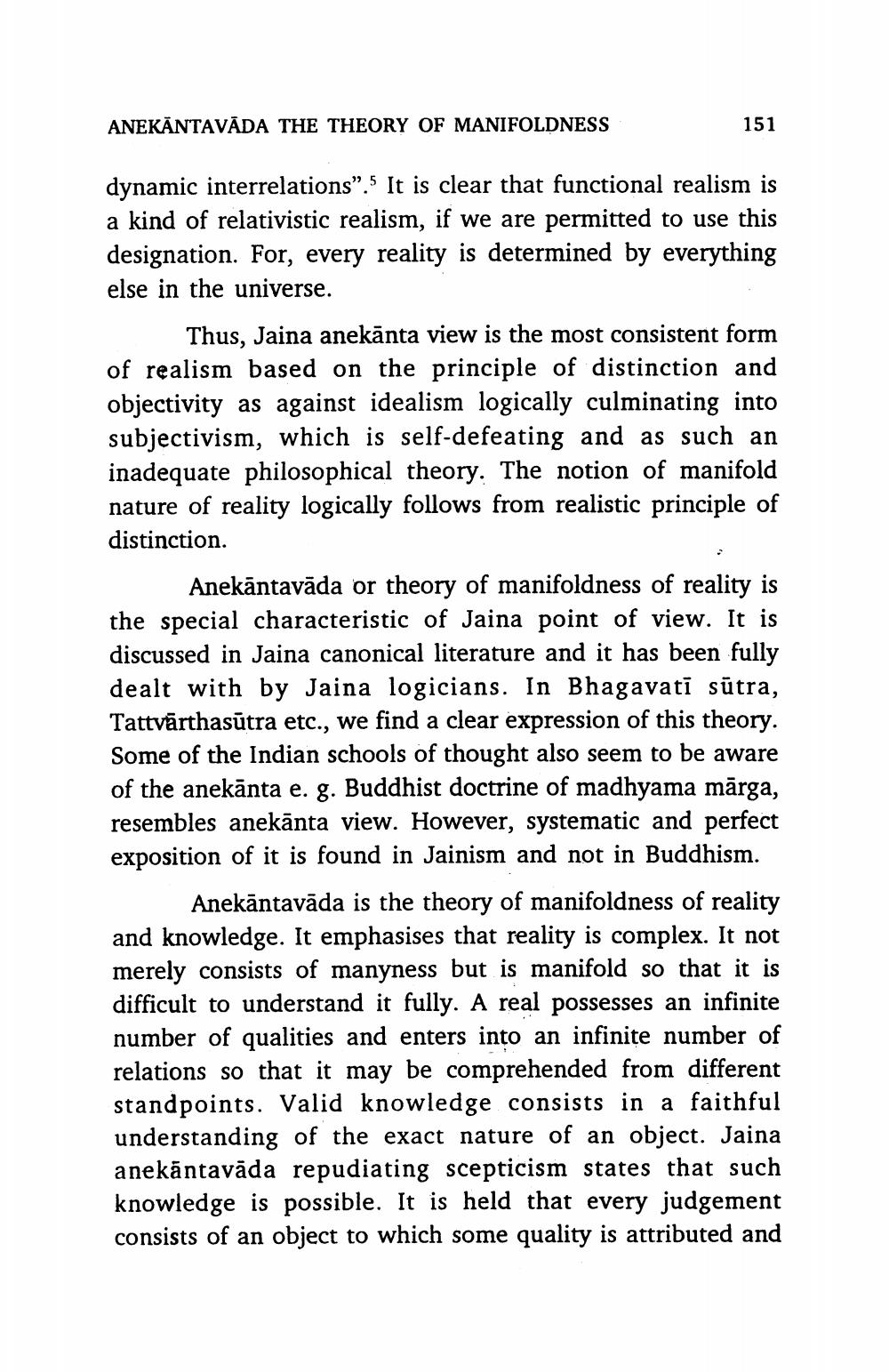________________
ANEKĀNTAVĀDA THE THEORY OF MANIFOLDNESS
151
dynamic interrelations”.5 It is clear that functional realism is a kind of relativistic realism, if we are permitted to use this designation. For, every reality is determined by everything else in the universe.
Thus, Jaina anekānta view is the most consistent form of realism based on the principle of distinction and objectivity as against idealism logically culminating into subjectivism, which is self-defeating and as such an inadequate philosophical theory. The notion of manifold nature of reality logically follows from realistic principle of distinction.
Anekāntavāda or theory of manifoldness of reality is the special characteristic of Jaina point of view. It is discussed in Jaina canonical literature and it has been fully dealt with by Jaina logicians. In Bhagavatī sūtra, Tattvārthasūtra etc., we find a clear expression of this theory. Some of the Indian schools of thought also seem to be aware of the anekānta e. g. Buddhist doctrine of madhyama mārga, resembles anekānta view. However, systematic and perfect exposition of it is found in Jainism and not in Buddhism.
Anekāntavāda is the theory of manifoldness of reality and knowledge. It emphasises that reality is complex. It not merely consists of manyness but is manifold so that it is difficult to understand it fully. A real possesses an infinite number of qualities and enters into an infinite number of relations so that it may be comprehended from different standpoints. Valid knowledge consists in a faithful understanding of the exact nature of an object. Jaina anekāntavāda repudiating scepticism states that such knowledge is possible. It is held that every judgement consists of an object to which some quality is attributed and




